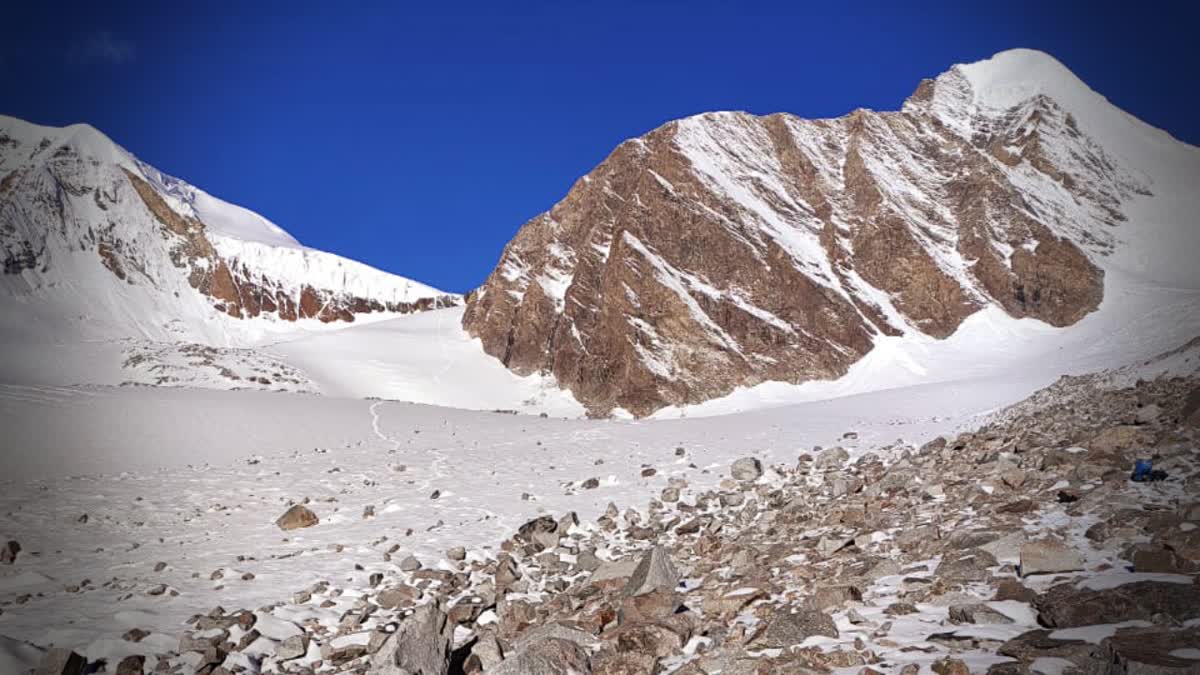Guwahati: A team of researchers from Nagaland University and Cotton University has discovered the shrinking of significant glaciers in the Himalayan Belt spreading across Arunachal Pradesh in the last three decades. The study reveals that the gradual melting of glaciers has adversely affected downstream areas in Arunachal Pradesh and Assam, raising significant concerns.
The research was led by Dr Latonglila Jamir, Professor at Nagaland University, and Dr Nabajit Hazarika, Professor at Cotton University, Guwahati, along with researchers Vimha Ritese and Amenuo Susan Kulnu from Nagaland University. The research has been published in the Journal of Earth System Science under the Indian Academy of Sciences.
Speaking to ETV Bharat about this research, Prof. Nabajit Hazarika of Cotton University, Guwahati said, “Known as the ‘Third Pole’, the Himalayas hold the highest concentration of glaciers outside the polar regions. These glaciers act as a source of freshwater for more than 1.3 billion people living downstream.”
“The rapid retreat of glaciers in recent decades has raised concerns about long-term water availability and ecological balance,” said Prof Hazarika, adding that the study highlights the increasing impact of climate change on the eastern Himalayas.
Talking about the study, Dr. Latangila Jamir, Associate Professor, Department of Environmental Sciences, University of Nagaland said, “Remote Sensing (RS) and Geographic Information System (GIS) were used in the study to analyse the changes in glaciers in Arunachal Pradesh from 1988 to 2020. Most glaciers in the region are situated at altitudes between 4,500 and 4,800 metres above sea level.”
“The research shows a significant reduction in glacier cover. The region had 756 glaciers covering about 585.23 sq km in 1988. By 2020, this number had declined to 646, with the total glacier-covered area shrinking to 275.38 sq km. Researchers estimated an average annual glacier loss of 16.94 sq km. The study found that small glaciers (less than 5 sq km) were found to retreat rapidly.”
Dr. Jamir continued, “The consequences of the retreat of glaciers extend beyond the nearby areas as well. The communities that depend on the meltwater of glaciers for agriculture and drinking water may face water scarcity in the future. In the first instance, melted glaciers can cause an unstable flow of water in rivers and can cause floods as well. The formation and expansion of glacial lakes pose an additional threat, as Glacial Lake Outburst Floods (GLOFs) can be devastating.”
The researchers also expressed their concern that the situation may impact the downhill areas of Arunachal Pradesh and Assam. “This research reveals that the rapid melting of glaciers could lead to devastating floods in the future, potentially impacting Assam, as the Brahmaputra River may be affected,” warned Prof Nabajit Hazarika.
Read More:



